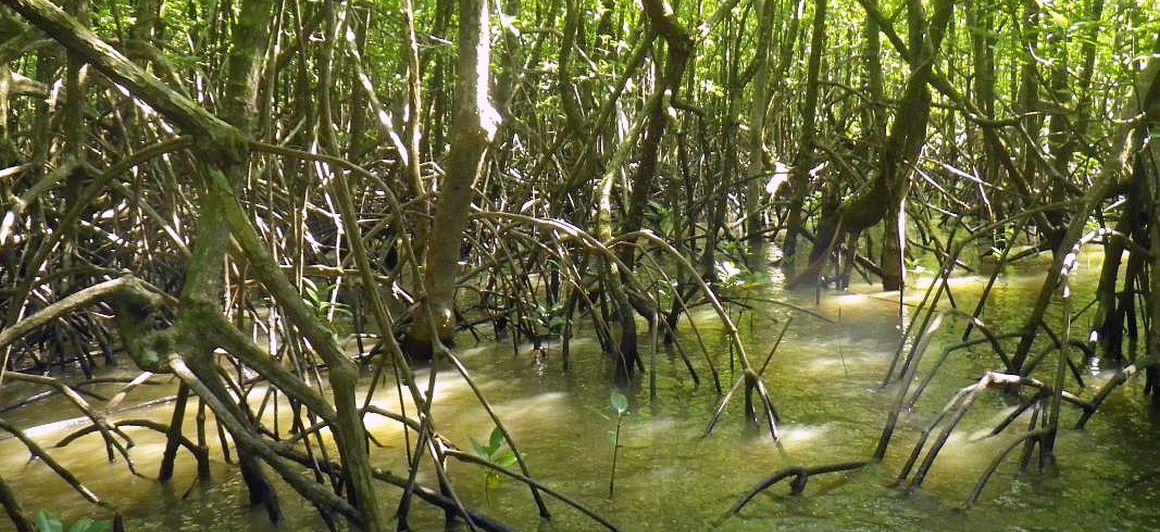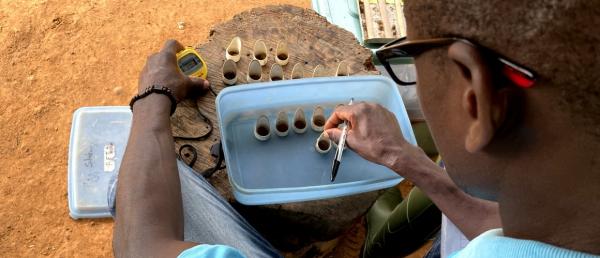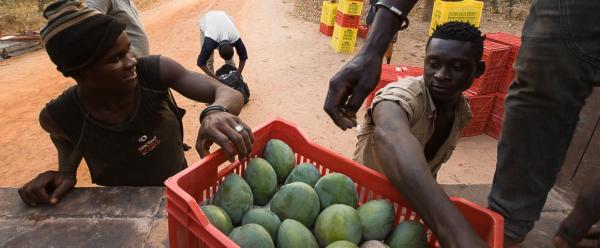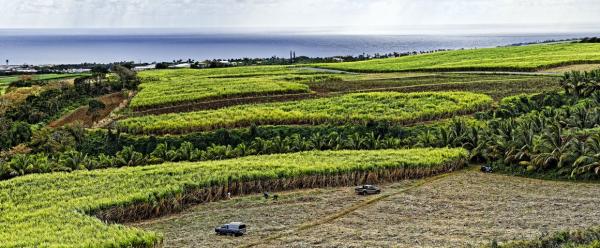Results & impact 5 February 2024
- Home
- CIRAD news
- News
- Biodiversity | A tool to assess mangrove restoration
Biodiversity | A tool to assess mangrove restoration

Mix of wild and planted trees in Trat province, southeastern Thailand © V. Gond, CIRAD
Mangroves constitute real forests between land and sea, and are flexible, robust ecosystems that adapt rapidly to their environment. They are biodiversity-rich habitats , which shelter and protect numerous species of crustaceans, amphibians, fish, birds and also mammals.
Rich but endangered environments
Although these ecosystems have been studied for more than 30 years, there is still a lot to learn. In particular, little is known about how they react to pollution or to climate change. Moreover, their future remains a serious concern, despite growing awareness of their role in maintaining coastal biodiversity.
It is therefore now necessary to better protect them , especially from unsustainable practices such as intensive aquaculture and shrimp farming, or clearing to harvest timber. To do so, it is essential to ensure effective, automatic monitoring of their dynamics, whether the stands are restored or natural.
RESCuE: a project to assess mangrove restoration
With this goal in mind, Valéry Gond, a geographer specialising in remote sensing at CIRAD, and his team recently developed an algorithmic tool dedicated to this type of monitoring. This study was conducted in the framework of the RESCuE project focusing on the monitoring and restoration of sustainable coastal ecosystems.
The scientists chose to study a mangrove stand in the south-eastern part of Thailand, in the province of Trat. On site, natural trees are mixed with trees planted by people. In terms of restoration, a single species – Rhizophora – was used in the early 1990s, whereas natural mangroves have greater diversity, with 14 species, the main ones being Avicennia and Bruguiera.
With the computing power of Google Earth Engine, the researchers analysed and synthesised almost 30 years of data from Landsat satellites in order to measure the different rates of photosynthetic activity in these submerged forests. Drone imagery has also been used to analyse their plant structure and their development.
At the study site, the findings show that after 28 years, restored mangroves reach almost the same height as natural stands : 18 metres for natural forests and 14 metres for regenerated forests. The study also shows that they require at least seven years, ranging up to 13 years, to reach a rate of photosynthetic activity similar to that of natural stands .
This tool can be used to assess small or large-scale restoration projects . The algorithm is adapted to the study of changes in the dynamics of mangrove cover, whether a gain or a loss, under the effect of disturbances such as forestry or natural degradation linked to climate and marine hazards.
Buoyed by these results, the team at CIRAD is planning a new project in the near future focusing on the management of the restoration of these ecosystems in Southeast Asia. In this context, the scientists will look at the consolidation of female governance. Indeed, the project is counting on groups of women taking responsibility for this management, through their specific awareness of environmental issues.
The benefits of mangroves Mangroves are natural barriers against the sea and protect coastal areas from erosion. They are recognised for their role in carbon storage and climate regulation. They also trap sediments in the ground and act as a filter by purifying water that enables corals to develop offshore. Moreover, they provide shelter and nurseries for many animal species. |
Partners
- The Joint Graduate School for Energy and Environment (JGSEE) (Thailand)
- King Mongkut’s University of Technology in Bangkok (Thailand)
- University of North Carolina at Chapel Hill (United States)
- Technical University of Dresden (Germany)
- Institute of Forest Growth and Forest Computer Sciences, Technical University of Dresden (Germany)
- European Commission
- COSTEL – joint research unit under the CNRS – University of Rennes
- Royal Forest Department (Thailand)
- Office of Mangrove Conservation, Department of Marine and Coastal Resources (Thailand)


























